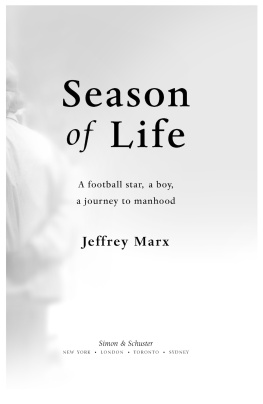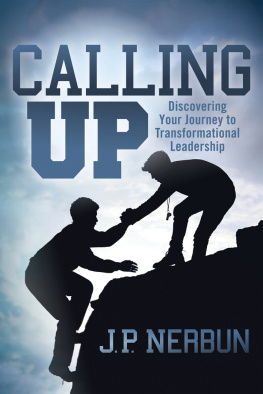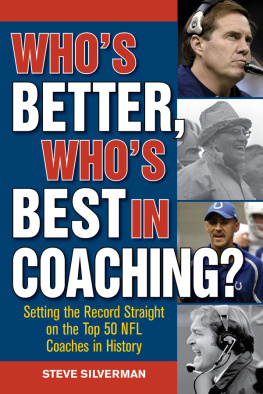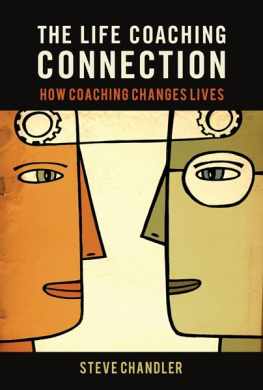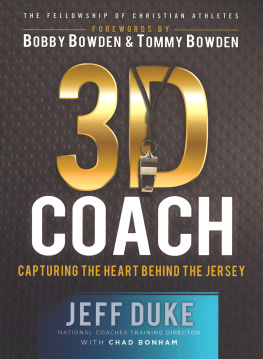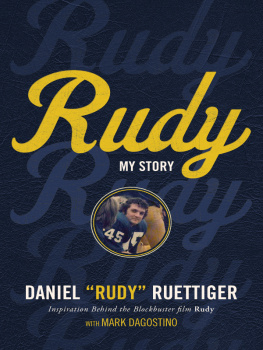




Simon & Schuster
1230 Avenue of the Americas
New York, NY 10020
www.SimonandSchuster.com
Copyright 2011 by Building Men and Women for Others, Inc.
All rights reserved, including the right to reproduce this book or portions thereof in any form whatsoever. For information address Simon & Schuster Subsidiary Rights Department, 1230 Avenue of the Americas, New York, NY 10020.
First Simon & Schuster hardcover edition August 2011
SIMON & SCHUSTER and colophon are registered trademarks of Simon & Schuster, Inc.
The Simon & Schuster Speakers Bureau can bring authors to your live event. For more information or to book an event, contact the Simon & Schuster Speakers Bureau at 1-866-248-3049 or visit our website at www.simonspeakers.com .
Designed by Nancy Singer
Manufactured in the United States of America
10 987654321
ISBN 978-1-4391-8298-7
ISBN 978-1-4391-8300-7 (ebook)
This book could not have been written apart from the love, strength, and wisdom of my wife, Paula. Paula gave me the courage to confront, articulate, and embrace my past and then integrate these experiences into my life mission to build a better world. My children, Alison, Esther, Barney, and Joey, have been my sustaining source of joy. I love you all.
CONTENTS
PART I
INTRODUCTION
The InSideOut Process
The black sky hung heavy over Baltimore that October night. Streetlights all over our neighborhood were burned out. Clouds clung to the tops of the row houses, and as I drove, the mist rose so thickly that it felt as if the car was colliding with it.
I was driving home with my four-year-old son, Barney, asleep in the seat beside me. He rested his head on the armrest. Ice cream stained his cheek. I turned off talk radio to savor his peaceful breathing.
It was my weekly father-son night with Barney. I had a speech scheduled that evening and thought it might be fun to take him along. My wife, Paula, dressed him up in the same outfit I was wearingblue blazer, red tie, and khaki pants. She handed me his coloring book and crayons as we walked out the door.
I sat him in the front row and told him that if he behaved, I would take him to the local ice cream shop and he could order anything he wanted.
As I spoke from the podium, I realized that I couldnt concentrate. It was a few years into my ministry. I had started to enjoy public speaking and loved engaging my audience. It gave me a sensation like the single-mindedness and adrenaline rush that I got from sports.
But tonight I felt nervous and distracted. I kept watching Barney and he kept watching me. Even though my brain was sending the right words to my mouth, my deeper mind kept focusing on my son.
I was overcome with how great he looked and how much I loved him.
After the speech and handshakes, I went over to him and hugged him.
Dad, that was really good! he said.
My heart was touched. It was so like Barney to be thoughtful beyond his years.
I got him his ice creamhe ordered a hot fudge sundae and a chocolate milkshake. I just couldnt say no. As the bright light of the ice cream shop illuminated the ice cream covering Barneys chin and clothes, I thought about how Paula would react to my sweet indulgence. Far too much sugar, and the stains to prove it!
Outside, the city was empty and the mist was thick; a few roaming cats and random rats spooked me.
As we got closer to home, I looked down at Barney again. Suddenly, I began to have the most mystical and magical experience of my life. It seemed as though my soul left my body and connected with his. I had an overwhelming sense of how much I loved him, how special and important he was to me. Out of all the children in the world, this magnificent boy was my son. And I was his dad.
And in the throes of this spiritual connection, it seemed as if the mist started coming in through the car vents and engulfing us. I pulled over to the side of the road and stopped. A sense of being haunted came over me, a sense that maybe there were a few shadows and ghosts lingering in the dark that needed to come out into the light.
And then for the first time in my adult life, I managed to articulate something that had always eaten at me: My father never saw me this way.
I was acutely aware of the difference between the love I felt for Barney and what I had received from my own father. My father never felt this. Why didnt I have a father who loved me the same way I love my son?
The car arrived home that night almost driving itselfand carrying two boys. One was sound asleep on my shoulder, resting in the strength and security of my love for him. And the other was me, a four-year-old Joey Ehrmann wrapped in a retired linemans body who was just starting to get in touch with the hole inside his soul.
I handed both boys to Paula. I told her about my experience and my wave of emotionsthe sense of loss, grief, and abandonment that I associated with my father. Forty years of imprisoned emotion were being set free. I realized that night that a change was happening, the start of a permanent one. All the pain, hiding, and shame were ending as I saw my story laid out on the road right there in front of me. The days with my abusive father and my constant aching for his love, the debilitating sports culture in which I thrived as a teen in Buffalo, my manipulative coaches and my incessant need for their approval, and my junkies use of sports, fame, and drugs as medication for the grief. I was beginning to see it all clearly and knew it was time to put it to rest.
Laid out before me was my life as a sports story, a narrative with each mile marker underscoring a coaching relationship. I saw the transactional coaches: the kind of coaches who use players as tools to meet their personal needs for validation, status, and identity. They held their power over us to elicit the response they wanted. I obeyed these coaches out of necessity but I never accepted their belief systems or bought into their programs. Coach first, team second, and players growth and needs last, if at all, were their modus operandi.
I also saw the transformational coaches, who used their coaching platform to impart life-changing messages that I began to understand only decades later. Coach-power, like all forms of power, can be used either for good or for bad, for self or for others. Transformational coaches are other-centered. They use their power and platform to nurture and transform players. I followed these coaches because I sensed their authenticity; they have affected me for a lifetime. Players first, team second, coachs needs met by meeting the needs of players.
I realized my sports career had been a lifelong, often desperate, search for acceptance and approval from adults who had power and authority over me. I had been a sports hero in high school, an All-American at Syracuse University, and a star in the NFL, but the profound impact that sports has had on my life has had little to do with my performance, my awards, or the number of games my team won.
Next page

